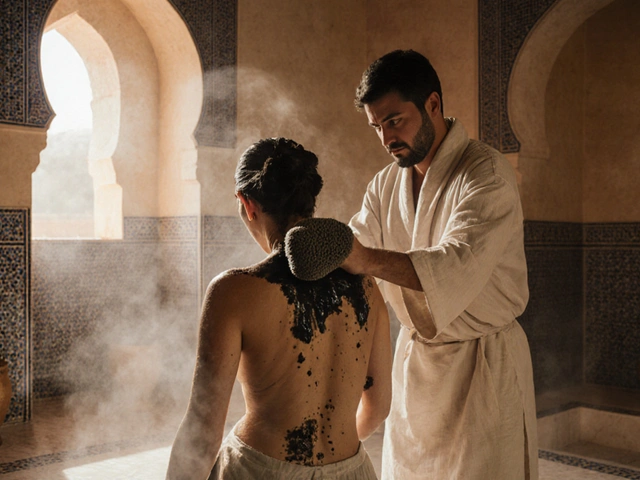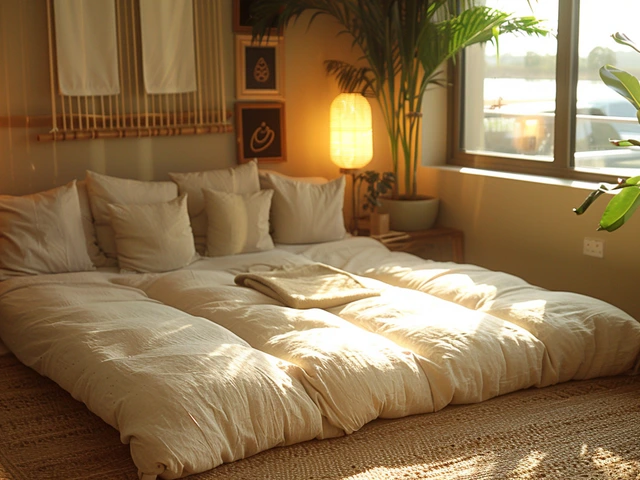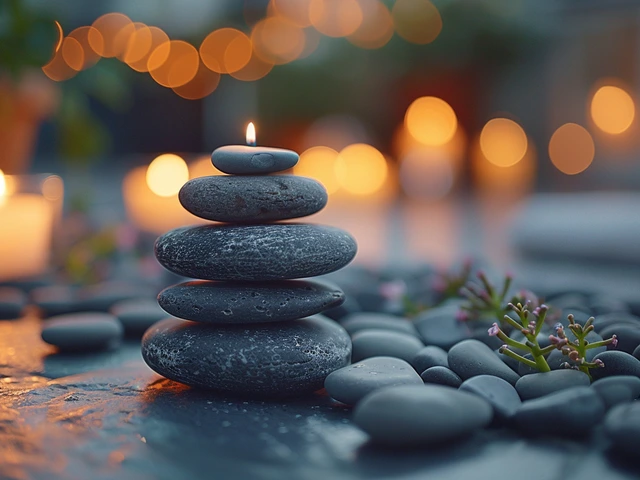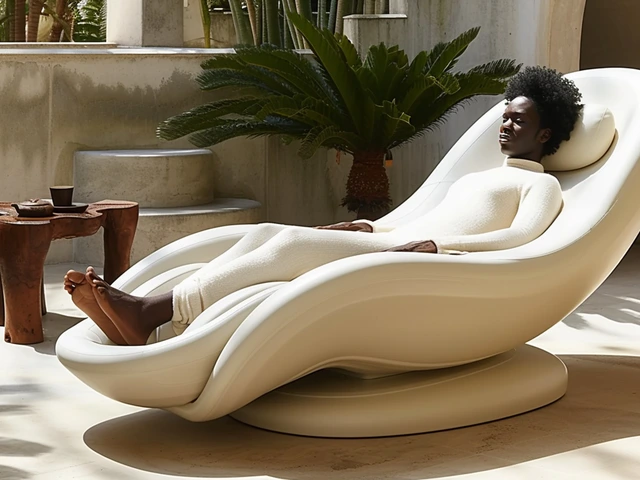The Rungu: A Significant Symbol of African Tradition
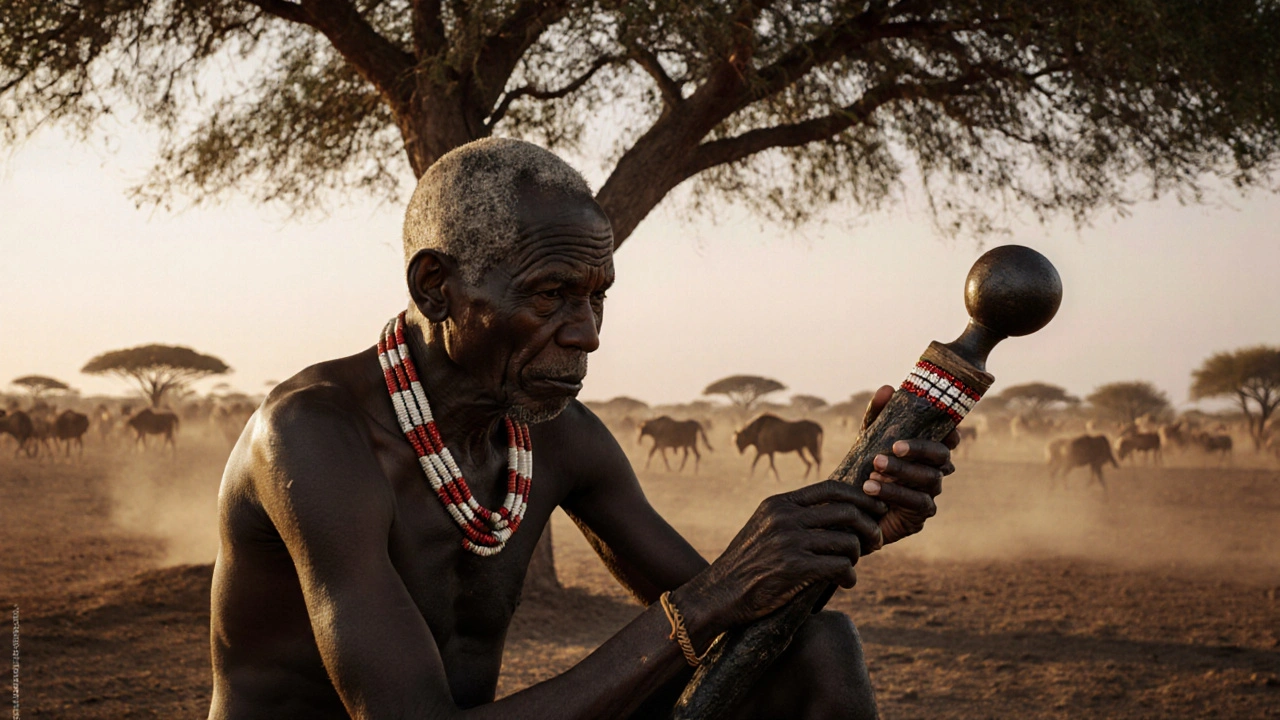
Rungu Authenticity Checker
Check Your Rungu Authenticity
This tool helps you determine if a rungu is an authentic traditional artifact or a modern replica. Based on criteria from African cultural traditions.
Authenticity Results
The rungu isn't just a stick. In many parts of Africa, especially among the Maasai, Kikuyu, and other East African communities, it's a living piece of history - carried in the hand, passed down through generations, and woven into daily life. You’ll see it resting against a hut wall, swung gently by a herder watching cattle, or held firmly by a elder during a village meeting. It’s not decorative. It’s functional. And it carries meaning deeper than its wooden shape suggests.
What Exactly Is a Rungu?
A rungu is a short, thick club, usually made from hardwood like acacia or ebony. It’s about 12 to 18 inches long, with a weighted knob at one end and a smooth handle at the other. Some are plain, carved only by hand. Others are decorated with beads, metal bands, or painted patterns that signal clan identity, age grade, or status. Unlike a sword or spear, the rungu doesn’t kill from a distance. It’s meant for close contact - to strike, to defend, to command attention.
Its design is simple, but that’s the point. It’s made from what’s available. A herder finds a fallen branch, shapes it with a knife, sands it smooth, and adds a leather grip. No factory. No mass production. Each one tells a story of its maker.
More Than a Weapon
Yes, the rungu can be used as a weapon. In the past, it was carried by warriors to protect livestock from lions or rival clans. But calling it just a weapon misses the bigger picture. In many communities, it’s a symbol of authority. When a Maasai elder raises a rungu during a dispute, silence follows. It’s not a threat - it’s a signal that the speaker holds the right to be heard.
Among the Kikuyu, young men received their first rungu during initiation rites. It marked their transition from boyhood to manhood. The act of receiving it wasn’t just ceremonial - it came with responsibility. To carry a rungu meant you were now expected to protect, to lead, to speak with purpose.
Even today, you’ll see rungus used in dances. In cultural performances across Kenya and Tanzania, dancers swing them in rhythmic arcs, not to attack, but to honor tradition. The movement is precise. The sound - a soft thud against the palm - echoes like a heartbeat.
Women and the Rungu
It’s common to assume the rungu is a male tool. But that’s not the full truth. Among the Maasai, women carry smaller versions called ng’ombe - often lighter, sometimes tipped with copper. They use them to herd goats, ward off pests, or defend their homes when men are away. In some villages, women carry rungus during market days, not for violence, but as a quiet statement: I am capable. I am watchful.
There’s a story from a village near Narok, Kenya, where a woman used her rungu to stop a thief from stealing milk from her homestead. The thief didn’t expect a woman to fight back - and he didn’t get away. That rungu didn’t kill. It protected. And that’s what matters.
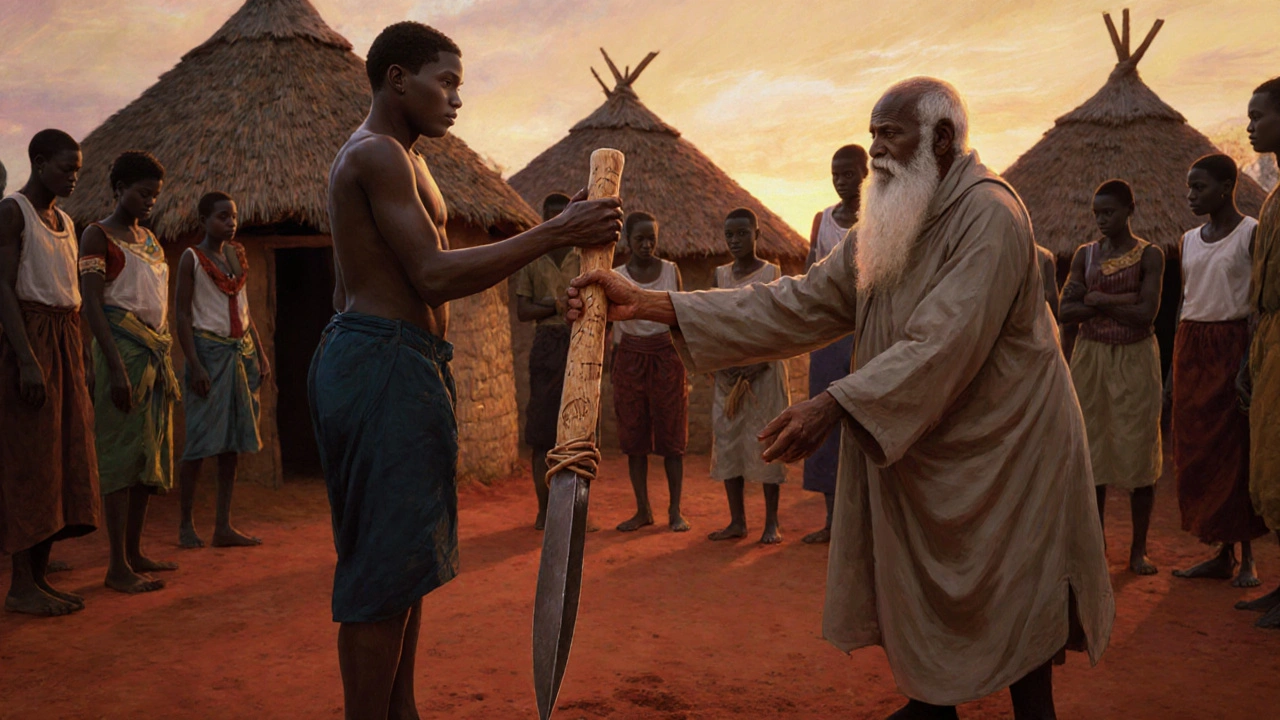
The Rungu in Modern Life
Today, you’ll find rungus in tourist shops in Nairobi and Arusha. They’re polished, painted, and sold as souvenirs. Some are even mounted on walls in homes across Europe and North America. But when you buy one in a gift shop, you’re buying a replica - not the real thing.
The authentic rungu is still made by hand. In rural Kenya, artisans carve them using traditional tools. The wood is chosen for density. The knob is shaped to fit the palm. The handle is wrapped with sinew or leather from a cow that was raised and slaughtered nearby. It’s not just a product. It’s a process that takes days, sometimes weeks.
Some young Africans are reviving the tradition. In Nairobi, a group of artists and activists started a project called Carry the Weight. They teach youth how to make rungus from reclaimed wood, then donate them to community leaders in remote villages. The goal? To reconnect young people with their heritage - not as museum pieces, but as living tools.
Why It Still Matters
Colonial powers tried to ban the rungu. They called it primitive. Dangerous. Uncivilized. But it didn’t disappear. It adapted. It survived because it wasn’t just a tool - it was part of identity.
Today, as African nations reclaim their cultural narratives, the rungu stands as a quiet symbol of resilience. It doesn’t shout. It doesn’t need to. Its presence speaks: We are here. We remember. We carry our history in our hands.
Visit a village in the Rift Valley, and you’ll see an old man sitting under a tree, running his fingers along the smooth curve of his rungu. He doesn’t talk much. But when he lifts it - just slightly - you understand. This isn’t a relic. It’s a promise. A promise to protect, to lead, to endure.
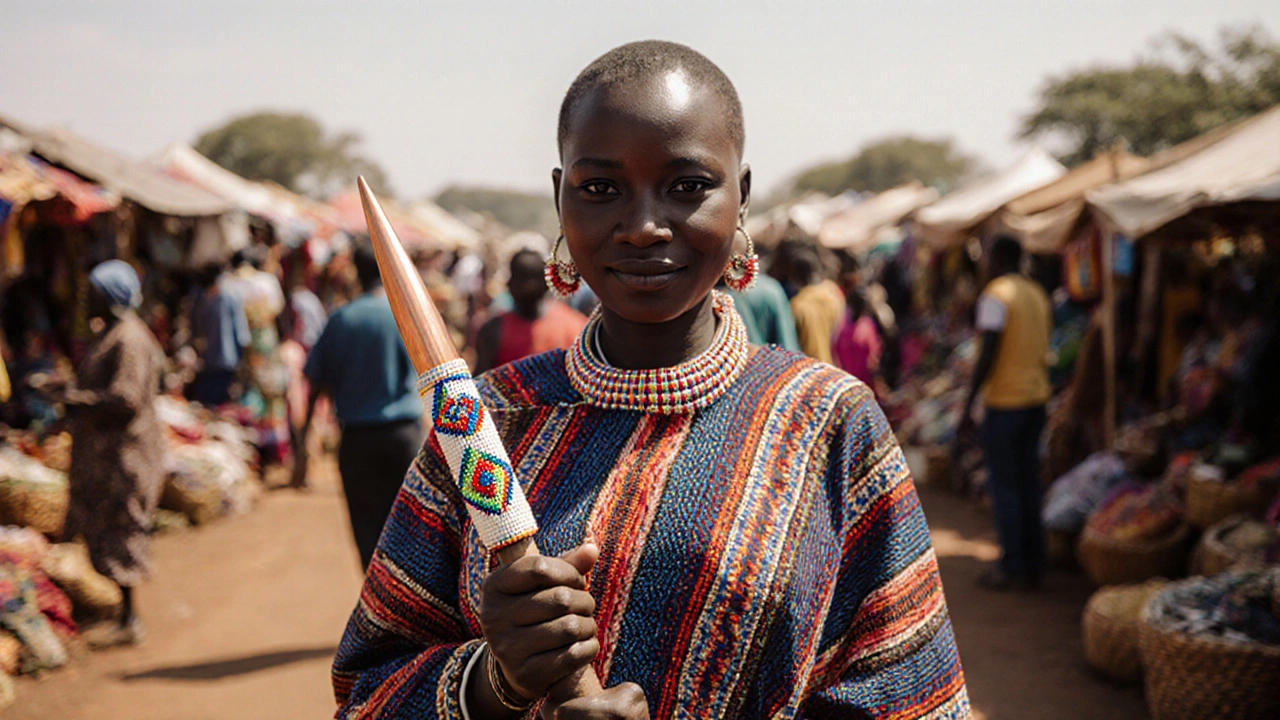
How to Recognize an Authentic Rungu
If you ever come across a rungu for sale, here’s how to tell if it’s real:
- Wood type: Authentic ones use dense African hardwoods like acacia, ebony, or mopane. Lightweight pine or plastic are red flags.
- Weight: A real rungu feels solid in your hand - not hollow or too light. The knob should be heavy enough to swing with control.
- Carving: Hand-carved details have slight imperfections. Machine-made ones look too perfect, too uniform.
- Handles: Leather or sinew wraps are common. Plastic grips or glued-on beads suggest mass production.
- Origin: Ask where it was made. If the seller can’t name a village or artisan, it’s likely imported.
Buying an authentic rungu isn’t just about owning an object. It’s about supporting a craft that’s fading. Every purchase from a local maker helps keep the tradition alive.
What the Rungu Teaches Us
Modern life pushes us toward speed, efficiency, and disposability. We buy things meant to be thrown away. But the rungu is the opposite. It’s built to last. To be held. To be passed on.
It doesn’t need batteries. It doesn’t need Wi-Fi. It doesn’t need an app. It just needs a hand - and the will to use it wisely.
There’s a lesson there. Not just for Africans. For anyone who’s ever felt disconnected from their roots. The rungu reminds us that culture isn’t something you watch on a screen. It’s something you hold. Something you carry. Something you live.
Is the rungu still used as a weapon today?
Yes, but rarely for violence. In remote areas, it’s still carried for protection against wildlife, especially lions that threaten livestock. However, most modern uses are symbolic - in ceremonies, dances, or as a sign of authority. In cities, it’s mostly a cultural artifact or souvenir.
Which African tribes are most associated with the rungu?
The Maasai are the most widely known for using the rungu, especially in Kenya and Tanzania. The Kikuyu, Samburu, and Pokot also have strong traditions tied to it. Each group has slight variations in design, decoration, and ceremonial use, but the core function remains the same: a tool of protection, identity, and leadership.
Can women carry a rungu?
Absolutely. While often associated with men, women in many communities carry smaller versions called ng’ombe. They use them for herding, self-defense, and in cultural rituals. In some places, women are the primary keepers of the rungu tradition, especially when men migrate for work.
How is a traditional rungu made?
Artisans select a dense hardwood branch, often from acacia or ebony trees. They let it dry for weeks to prevent cracking. Then, using a machete or knife, they carve the knob and smooth the handle. Leather or sinew is wrapped around the grip for comfort. Some add beads or metal bands for decoration, using techniques passed down for generations. The whole process can take up to a month.
Why do some rungus have beads or paint?
Beads and paint aren’t just for looks - they carry meaning. Colors and patterns can indicate clan affiliation, age group, marital status, or achievements. For example, red beads might signal bravery, while white represents purity. In some groups, only elders are allowed to carry certain designs. It’s a visual language.
Is buying a rungu from a tourist shop disrespectful?
Not necessarily - but context matters. If the rungu is mass-produced and sold without understanding its meaning, it becomes a stereotype. But if you buy it directly from a local artisan, learn its story, and treat it with respect, it becomes a meaningful connection to culture. Always ask where it’s from and who made it.
Next time you see a rungu - whether in a museum, a village, or a photo - don’t just see a stick. See the hands that shaped it. The stories it holds. The people who still carry it with pride.

